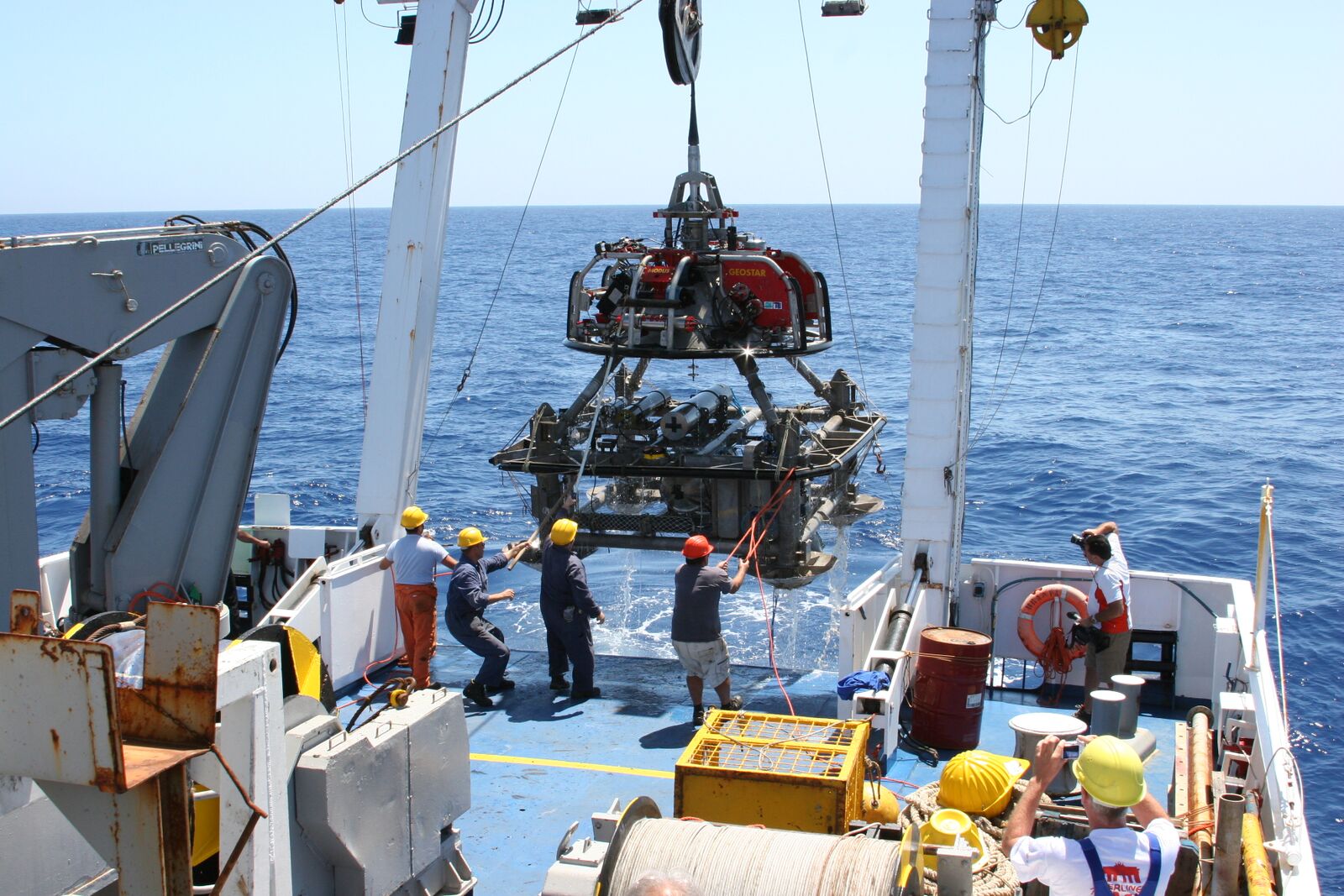E’ online www.emso.eu, il nuovo sito dell'Infrastruttura di Ricerca Europea EMSO ERIC che descrive le attività che coinvolgono gli osservatori sottomarini multidisciplinari dedicati allo studio e al monitoraggio dei mari europei.
Il sito dell'infrastruttura, realizzato nell’ambito di EMSO-Link, progetto finanziato dalla Commissione Europea nel programma Horizon 2020, nasce per comunicare e divulgare le attività del Consorzio Europeo EMSO ERIC.
L'obiettivo del nuovo sito è quello di ampliare la visibilità del Consorzio, sia in territorio europeo che extra-europeo e di offrire alla comunità scientifica internazionale uno strumento all’avanguardia per la ricerca scientifica e tecnologica in ambiente marino profondo. I primi destinatari delle informazioni riportate sul sito web sono i settori della scienza e dell’industria, offrendo anche la possibilità di accesso ai dati dell'infrastruttura Europea. Il sito web intende anche incentivare il coinvolgimento di nuovi utenti, come esperti del settore del monitoraggio e della protezione dell'ambiente marino e del mondo accademico, offrendogli la possibilità di accedere fisicamente ad alcuni osservatori per poter condurre test in condizioni ambientali estreme. Recentemente è stato avviato anche il primo bando di tipo TRANSNATIONAL ACCESS, attraverso il quale EMSO ERIC offrirà alle migliori proposte la possibilità di accedere a tre suoi osservatori - EMSO PYLOS (Hellenic Arc), EMSO SmartBay (Ireland) ed EMSO NICE (Ligurian Sea) - a chi è interessato a studiare il comportamento dei propri prototipi.
Il nuovo sito web diventerà, infine, un utile strumento per la formazione e sensibilizzazione del pubblico non specialistico sull'importanza di studiare, monitorare, conoscere e salvaguardare il mondo marino che è una fonte inesauribile o quasi di sostentamento, di energia e che gioca un ruolo importante nelle variazioni climatologiche.
EMSO (, European Multidisciplinary Seafloor and water-column Observatory) è una Infrastruttura di Ricerca a scala europea nel campo delle scienze ambientali. E’ stata costituita in accordo con il piano d’azione del Forum di Strategia Europea per le Infrastrutture di Ricerca (ESFRI) e con il Piano Nazionale per le Infrastrutture di Ricerca del MIUR (PNIR) e comprende un complesso sistema di osservatori sottomarini per il monitoraggio a lungo termine, anche in tempo reale, dei processi ambientali legati all’interazione tra la geosfera, la biosfera e l’idrosfera. Tale sistema è composto attualmente da undici osservatori sottomarini posizionati su fondali profondi e quattro siti di test in acque basse. Tali osservatori sono dislocati in siti chiave dal punto di vista dell’interesse scientifico nei mari intorno all’Europa, dal Nord Atlantico al Mar Mediterraneo e al Mar Nero, formando così una infrastruttura paneuropea ampiamente distribuita.
EMSO ERIC (European Research Infrastructure Consortium) è il Consorzio europeo che gestisce EMSO. L’ERIC dovrà coordinare la fornitura dei servizi ai vari soggetti di interesse, provvedendo all’alimentazione energetica, al trasferimento dati, ai sensori e garantendo l’infrastruttura dati necessaria a garantire le osservazioni oceaniche interattive, in modo continuo, ad alta risoluzione ed in tempo quasi-reale. I dati raccolti dagli osservatori coinvolgono una vasta gamma di aree di ricerca tra cui biologia, geologia, chimica, fisica, ingegneria ed informatica e nei più diversi scenari dall’ambiente polare a quello subtropicale, garantendo così una vasta multidisciplinarietà e interdisciplinarietà. I Paesi membri di EMSO ERIC sono: Italia (che ospita la sede legale), Francia, Spagna, Inghilterra, Irlanda, Grecia, Portogallo e Romania.
The new website of EMSO ERIC Research Infrastructure is now online
www.emso.eu, the new website of European Research Infrastructure Consortium EMSO, describes the activities conducted by means of the multidisciplinary seafloor observatories located around Europe and dedicated to the study and the monitoring of the deep ocean.
The Infrastructure website, developed within EMSO-Link project, funded by the European Commission within Horizon 2020, was shaped to communicate and spread the Consortium activities.
The aim of the new website is to increase the visibility of the Consortium, both in European and extra-European regions and to offer to the international scientific community a cutting edge tool at disposal of the scientific and technological research in the deep marine environment. The primary beneficiaries of the website content are the Science and Industry sectors, since they get the opportunity to access to the Infrastructure data and facilities. The website also boosts the engagements of new users, expert in the monitoring and protection of the marine environmental and academics, who can have the possibility to physically access some observatories and conduct experiments and tests in extreme environmental conditions. Recently EMSO ERIC launched his first call for a TRANSNATIONAL ACCESS offering the access at three observatories - EMSO PYLOS (Hellenic Arc), EMSO SmartBay (Ireland) and EMSO NICE (Ligurian Sea) - to the best scientific or technological proposals.
Moreover, the new website will become also a useful tool to train and make aware non specialized audience about the importance of studying, monitoring, and preserve the marine world, fundamental source of sustenance, energy and that plays a central role in the climate changes.
EMSO () is a widely distributed pan-European Research Infrastructure in the field of environmental sciences. Appearing in the Roadmap of the European Strategy Forum on Research Infrastructures (ESFRI) from 2008, it comprises a European-scale complex system of systems made up with open ocean fixed observatories for long-term monitoring, also in real time, of environmental processes related to the interaction between the geosphere, biosphere, and hydrosphere. It is presently composed of eight deep-seafloor and water-column observatories deployed in special sites around Europe, from the Arctic through the Atlantic and the Mediterranean to the Black Sea, and four shallow water test sites.
The EMSO ERIC (European Research Infrastructure Consortium) is the European institution steering the infrastructure of deep-sea observatories. The ERIC coordinates the provision of services to various stakeholders, supplying power, communications, sensors, and data infrastructure for continuous, high-resolution, (near-)real-time, interactive ocean observations across a multidisciplinary and interdisciplinary range of research areas including biology, geology, chemistry, physics, engineering, and computer science, from polar to subtropical environments, through the water column down to the abyss. EMSO ERIC members are: Italy (hosting the ERIC legal head-office), France, Spain, United Kingdom, Ireland, Greece, Portugal, and Romania.




